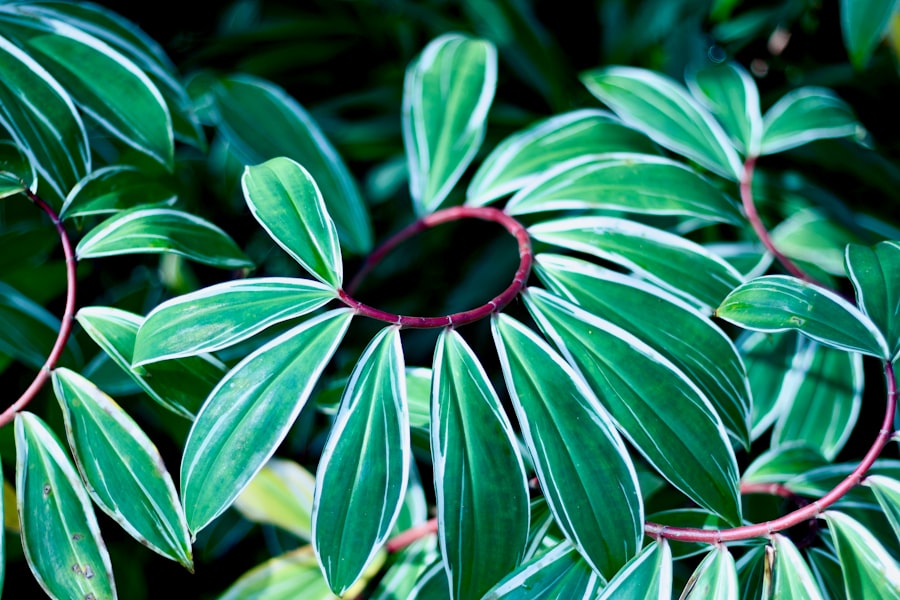Growing Ginger: Tips for a Thriving Harvest

Ginger, scientifically known as Zingiber officinale, is a flowering plant that originated in Southeast Asia. It has a long history of use in traditional medicine and culinary practices. The root of the ginger plant, known as the rhizome, is the part that is most commonly used. It has a spicy and aromatic flavor that adds depth to a variety of dishes.
Growing ginger at home can be a rewarding experience. Not only does it provide you with a fresh and readily available supply of this versatile spice, but it also allows you to connect with nature and engage in sustainable gardening practices. Whether you have a large garden or just a small space on your balcony, ginger can be grown successfully with the right knowledge and care.
Benefits of Growing Ginger at Home: Health and Culinary Uses
Ginger is not only a flavorful addition to your meals, but it also offers numerous health benefits. It has been used for centuries in traditional medicine to treat various ailments such as nausea, indigestion, and inflammation. Ginger contains bioactive compounds such as gingerol and shogaol, which have antioxidant and anti-inflammatory properties.
In addition to its medicinal uses, ginger is widely used in culinary practices around the world. It adds a unique flavor and aroma to both sweet and savory dishes. Ginger can be used fresh, dried, or powdered, making it a versatile ingredient in the kitchen. It pairs well with ingredients such as garlic, soy sauce, and citrus fruits, enhancing the taste of dishes like stir-fries, curries, and baked goods.
Choosing the Right Soil and Climate for Ginger Growth
To ensure successful ginger growth, it is important to choose the right soil conditions and climate. Ginger prefers loose, well-draining soil that is rich in organic matter. Sandy loam or loamy soil is ideal for ginger cultivation. The soil should have a pH level between 6.0 and 7.0, which is slightly acidic to neutral.
In terms of climate, ginger thrives in warm and humid conditions. It requires a minimum temperature of 50°F (10°C) for growth. If you live in a region with cold winters, it is best to grow ginger in containers that can be brought indoors during the colder months. Ginger plants also require partial shade to protect them from direct sunlight, especially during the hottest part of the day.
Preparing Ginger Rhizomes for Planting: Tips and Techniques
| Topic | Information |
|---|---|
| Ginger Rhizomes | Underground stems used for planting |
| Selection | Choose firm, plump rhizomes with visible buds |
| Preparation | Soak rhizomes in water overnight before planting |
| Planting Depth | Plant rhizomes 2-4 inches deep with buds facing up |
| Spacing | Plant rhizomes 8-10 inches apart in rows spaced 1-2 feet apart |
| Watering | Keep soil moist but not waterlogged |
| Fertilization | Apply a balanced fertilizer every 2-3 months |
| Harvesting | Wait until leaves turn yellow and die back before harvesting rhizomes |
When it comes to growing ginger, selecting the right rhizomes is crucial. Look for plump and firm rhizomes with well-developed buds or “eyes.” Avoid rhizomes that are shriveled, moldy, or have soft spots. It is best to purchase certified disease-free ginger rhizomes from a reputable source.
Before planting, it is important to prepare the ginger rhizomes properly. Start by soaking the rhizomes in water overnight to hydrate them. This will help stimulate growth. Next, cut the rhizomes into smaller pieces, making sure each piece has at least one bud or eye. Allow the cut pieces to dry for a day or two before planting.
Planting Ginger: Best Practices and Common Mistakes to Avoid
When planting ginger, it is important to follow best practices to ensure successful growth. Start by preparing the soil by loosening it and removing any weeds or debris. Dig a trench or hole that is about 2-3 inches deep and place the ginger rhizome with the bud facing up. Cover the rhizome with soil, leaving about an inch of space on top.
One common mistake when planting ginger is burying the rhizome too deep. This can hinder its growth and make it more susceptible to rotting. Another mistake is planting ginger too close together. Ginger plants require space to spread and grow, so make sure to leave at least 8-10 inches between each plant.
Watering and Fertilizing Ginger Plants: Dos and Don’ts

Proper watering and fertilizing are essential for the healthy growth of ginger plants. Ginger requires regular watering to keep the soil moist but not waterlogged. It is important to water deeply, ensuring that the water reaches the roots. However, avoid overwatering as it can lead to root rot.
In terms of fertilizing, ginger plants benefit from organic matter such as compost or well-rotted manure. Apply a balanced organic fertilizer once a month during the growing season. Avoid using chemical fertilizers as they can harm the soil and the environment.
Managing Pests and Diseases in Ginger Plants: Natural Remedies and Preventive Measures
Like any plant, ginger is susceptible to pests and diseases. Common pests that affect ginger plants include aphids, mealybugs, and spider mites. These pests can be controlled by using natural remedies such as neem oil or insecticidal soap. Regularly inspect your plants for signs of infestation and take action immediately to prevent further damage.
As for diseases, ginger plants can be affected by fungal infections such as root rot and leaf spot. To prevent these diseases, it is important to provide proper drainage and avoid overwatering. If you notice any signs of disease, remove the affected parts of the plant and treat with a fungicide if necessary.
Harvesting Ginger: Signs of Maturity and Harvesting Techniques
Ginger is typically ready for harvesting 8-10 months after planting. Signs that ginger is mature include yellowing leaves and dying back of the foliage. To harvest ginger, carefully dig around the base of the plant using a garden fork or shovel. Gently lift the rhizomes out of the soil, being careful not to damage them.
After harvesting, rinse the ginger rhizomes to remove any soil. Allow them to dry in a well-ventilated area for a few days. Once dry, ginger can be stored or used immediately.
Storing and Using Fresh Ginger: Tips for Maximum Flavor and Shelf Life
To store fresh ginger, wrap it in a paper towel and place it in a plastic bag or airtight container. Store it in the refrigerator, where it can last for up to three weeks. Alternatively, you can freeze ginger by peeling and grating it, then placing it in an airtight container or freezer bag. Frozen ginger can be stored for up to six months.
When using fresh ginger in cooking, it is best to peel it before use. The easiest way to peel ginger is by using the edge of a spoon to scrape off the skin. Grate or mince the ginger according to your recipe’s requirements. Ginger can be used in a variety of dishes such as soups, stir-fries, marinades, and desserts.
Growing Ginger for a Sustainable and Rewarding Experience
Growing ginger at home offers numerous benefits, both in terms of health and culinary uses. It allows you to have a fresh supply of this versatile spice at your fingertips while also engaging in sustainable gardening practices. By following the right techniques and providing the necessary care, you can successfully grow ginger in your own garden or even in containers on your balcony.
So why not give it a try? Growing ginger can be a rewarding experience that connects you with nature and provides you with a sustainable source of this flavorful spice. Whether you use it for its health benefits or its culinary uses, growing ginger at home is sure to enhance your gardening skills and add depth to your meals. So grab some rhizomes, prepare the soil, and get ready to enjoy the rewards of growing your own ginger.



